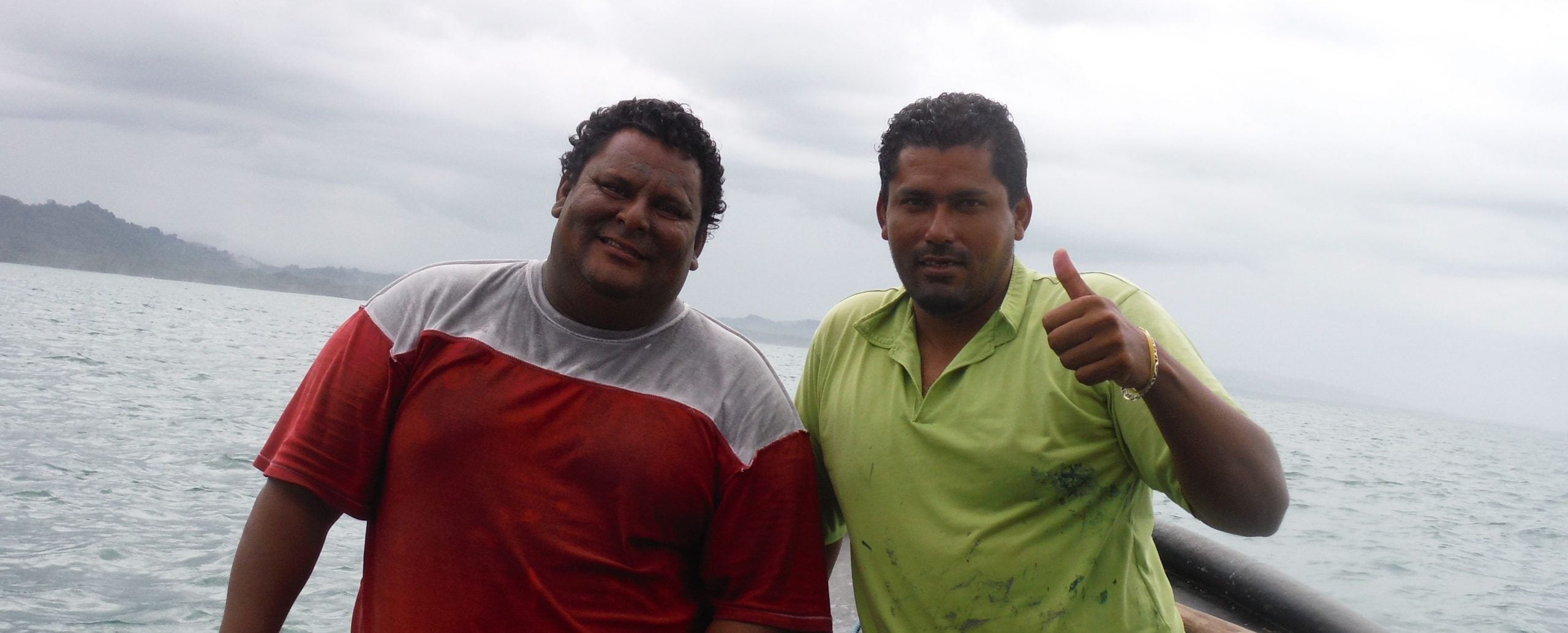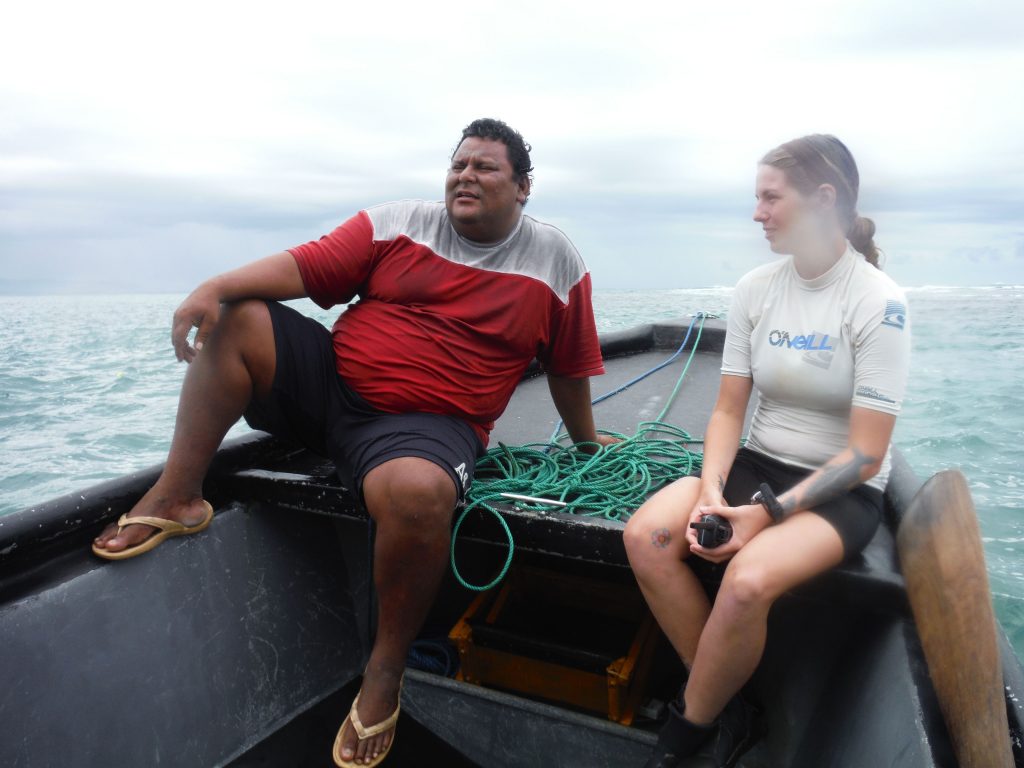Sometimes archaeologists get to feel like CSI sleuths. When attempting to research sites and understand the site formation processes and histories, oftentimes we must look to the locals and pick through the stories to pull out the answers.
We sat down with Luis and his brother Minor to ask a few questions about the sites and what they knew about them. Luis said that his father knew about the sites for 40-50 years but that he, personally, hadn’t known about them until about 20 years ago. His father, Don Manuel, was the first to take snorkelers to the sites 30 to 40 years ago with a small boat and paddles. Later, when the whole family began to get involved, he made bigger boats with motors to take people to the sites. Luis told us that a cannon had been taken from the area. In a 1991 earthquake, the tide was really low, exposing the reef and a cannon so someone removed it. He does not know where it went but it was probably sold. Don Manual found a cutlass on the Cannon Site and it is now in a museum in San José. Other people took things from the sites years ago because there were no checks or laws against it. They took cannon balls and sold them. They also took bricks and some bricks can even be seen on the desk at the entrance to Cahuita National Park. Some people took bricks and bottles and kept them in their homes to show to friends. Someone said there was a small gold cannon/gun that was taken and sold from the area, though there is no telling where it ended up or if it really was gold. Someone took a big anchor from the site to sell it but he was caught and Don Manuel brought it back. There is an anchor on the other side of Cahuita Point but it is covered in growth and it hasn’t been seen in years.
Luis told us he was glad we came because he did not know much about the sites. He did not know there were bricks or bottles on the Brick Site. He also though there were only three cannon on the Cannon Site. He was surprised to learn that there were thirteen! I showed Minor and Luis a small drawn map of the cannon site. They were so surprised and very interested to see how the cannon were spread out. Minor wanted to know how deep they were and guessed correctly that the deeper ones were harder for us to see and locate!
Luis told me that he knows all about the plants and animals in the park but that he never knew about the wrecks. He can now tell others about the sites because of our work here in Cahuita. He heard many rumors: that the ships were Spanish, or European, or Danish. He would like to know where they are from exactly and I told him of our possible Danish candidates. I told him it would take more research and that identification was difficult but we hoped to collect enough data to understand the shipwreck stories one day.
The fishermen have been wonderful helpers on our project. They worked just as hard as we did. Without Don Manuel, Chul, Luis, Minor, and Marvin, we would have gotten nowhere. They are a wealth of knowledge and we are ever grateful to them for taking time out of their day to taxi us to the sites and tell us their histories. Thank you from the ECU team!
-Melissa

